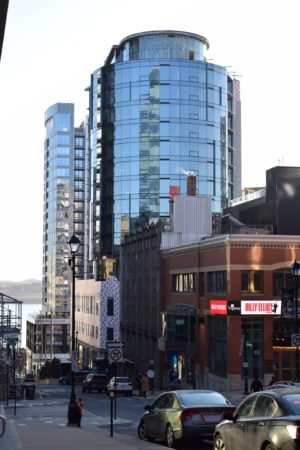What glass can be used to help reduce overheating in multi-storey buildings?

Phil Brown, regulatory marketing manager at Pilkington UK, shares the best glazing specifications that can help reduce overheating and ensure a comfortable temperature year-round.
It’s perhaps easy to overlook the issue of overheating in UK buildings after facing one of the coldest April months in decades.
But recent years have seen record breaking temperatures, with the Climate Change Committee forecasting that the UK will see an additional warming of roughly 0.6°C between now and 2050.
And, as the UK gets warmer, its building stock is becoming more tightly insulated. This has been recognised in a forthcoming new building regulation to mitigate the risk of overheating in new dwellings. Changes to Part L for new non-domestic buildings in force from June 2022 are also expected to drive demand for more highly performing products that can keep buildings cool during the summer.
While the move to make our building stock more sustainable is a much-welcomed step forward, it needs to be done with consideration to the health risks from overheating, such as dehydration, heat syncope and heat stroke.
The glazing industry has an important role to play in ensuring temperature control is taken into consideration when developers are specifying glazing for commercial buildings.
Finding the right balance of products to optimise light transmittance, thermal insulation and solar heat reduction will be key. Plus, when determining the best products, the orientation of the building, external shading, ventilation levels and microclimate of the room space needs to be considered too.
Solar control glazing allows daylight to pass through a window or facade while reflecting away a large degree of the sun’s heat. Pilkington Suncool is specifically designed to ensure buildings don’t overheat during the warmer months and also helps to reduce the need for both cooling and heating systems.
It works by reducing solar heat gain while maintaining high levels of natural light without impacting internal light levels. It also retains the heat in the building during the colder months due to a low-emissivity coating that reflects heat energy back into the building to keep rooms comfortable. As a result, it provides optimum performance, in turn enabling extensive use of glazing while ensuring a comfortable year-round environment, with the added benefit of helping to curb energy usage.
We recently supplied Pilkington Suncool 50/25 for a new fully glazed 11-storey mixed-use development in Nova Scotia, Canada, where winters can be as cold as -8°C, while summer temperatures reach highs of 30°C. The architect chose this product to prevent excessive temperatures during the warmer months, transmitting just 25% of the sun’s energy inside.
